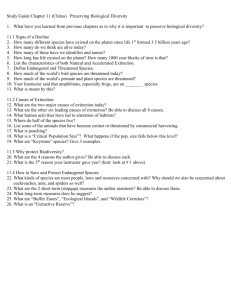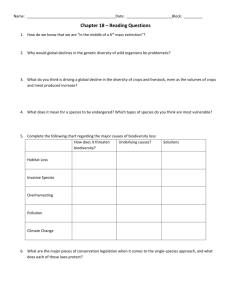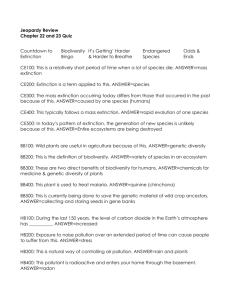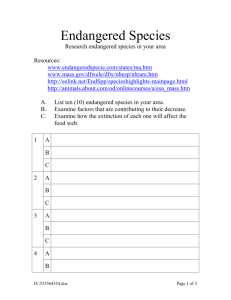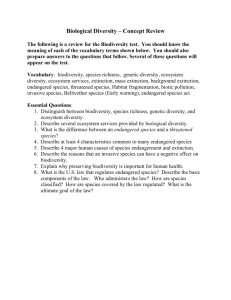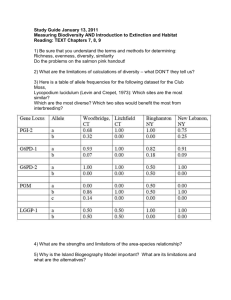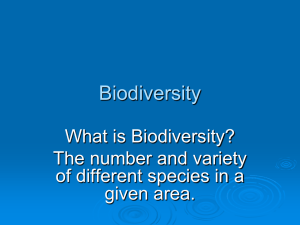AP Environmental Science Reading Guide – due 2/19 Reading
advertisement
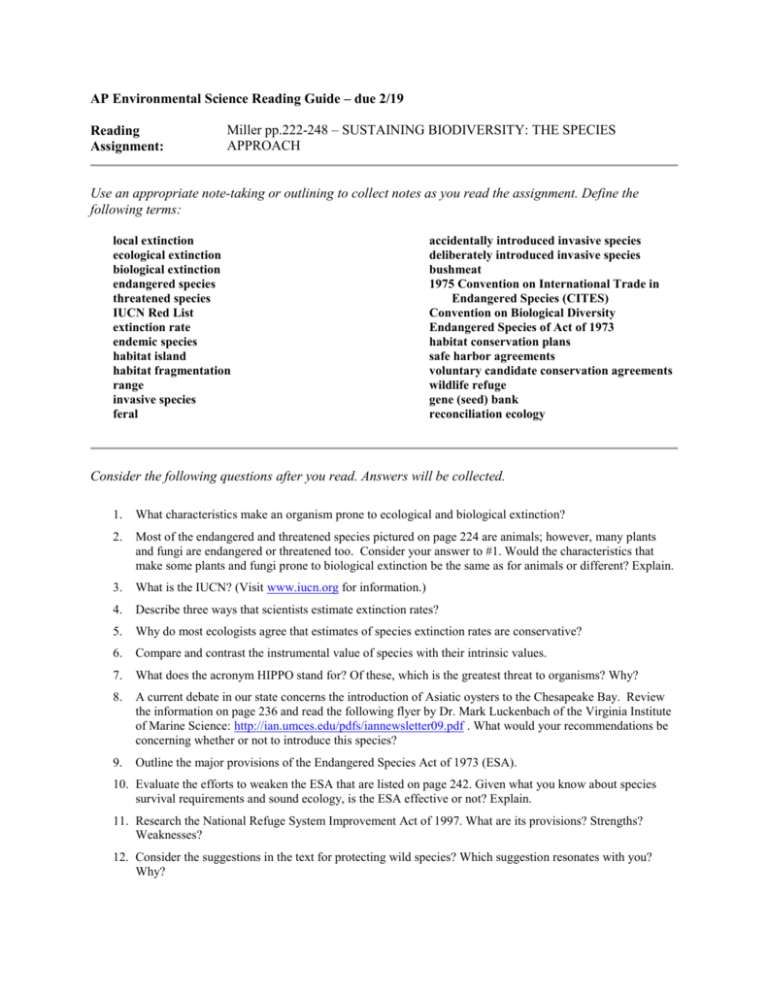
AP Environmental Science Reading Guide – due 2/19 Reading Assignment: Miller pp.222-248 – SUSTAINING BIODIVERSITY: THE SPECIES APPROACH Use an appropriate note-taking or outlining to collect notes as you read the assignment. Define the following terms: local extinction ecological extinction biological extinction endangered species threatened species IUCN Red List extinction rate endemic species habitat island habitat fragmentation range invasive species feral accidentally introduced invasive species deliberately introduced invasive species bushmeat 1975 Convention on International Trade in Endangered Species (CITES) Convention on Biological Diversity Endangered Species of Act of 1973 habitat conservation plans safe harbor agreements voluntary candidate conservation agreements wildlife refuge gene (seed) bank reconciliation ecology Consider the following questions after you read. Answers will be collected. 1. What characteristics make an organism prone to ecological and biological extinction? 2. Most of the endangered and threatened species pictured on page 224 are animals; however, many plants and fungi are endangered or threatened too. Consider your answer to #1. Would the characteristics that make some plants and fungi prone to biological extinction be the same as for animals or different? Explain. 3. What is the IUCN? (Visit www.iucn.org for information.) 4. Describe three ways that scientists estimate extinction rates? 5. Why do most ecologists agree that estimates of species extinction rates are conservative? 6. Compare and contrast the instrumental value of species with their intrinsic values. 7. What does the acronym HIPPO stand for? Of these, which is the greatest threat to organisms? Why? 8. A current debate in our state concerns the introduction of Asiatic oysters to the Chesapeake Bay. Review the information on page 236 and read the following flyer by Dr. Mark Luckenbach of the Virginia Institute of Marine Science: http://ian.umces.edu/pdfs/iannewsletter09.pdf . What would your recommendations be concerning whether or not to introduce this species? 9. Outline the major provisions of the Endangered Species Act of 1973 (ESA). 10. Evaluate the efforts to weaken the ESA that are listed on page 242. Given what you know about species survival requirements and sound ecology, is the ESA effective or not? Explain. 11. Research the National Refuge System Improvement Act of 1997. What are its provisions? Strengths? Weaknesses? 12. Consider the suggestions in the text for protecting wild species? Which suggestion resonates with you? Why?


